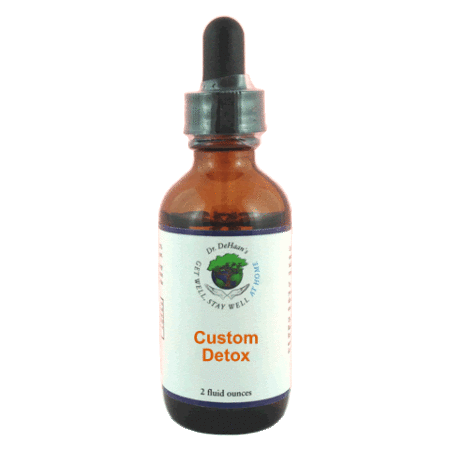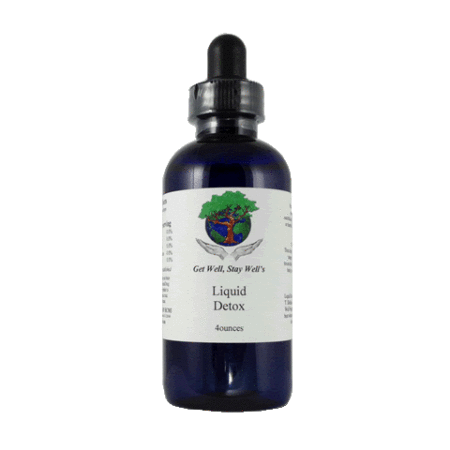 Dioxins are a class of chemical contaminants that are formed during combustion processes such as waste incineration, forest fires, and backyard trash burning. They are also used during some industrial processes like paper pulp bleaching and herbicide manufacturing. The highest environmental concentrations of dioxin are usually found in soil and sediment, with much lower levels found in air and water. Humans are primarily exposed to dioxins by eating food contaminated by these chemicals. Dioxin accumulates in the fatty tissues of the body.
Dioxins are a class of chemical contaminants that are formed during combustion processes such as waste incineration, forest fires, and backyard trash burning. They are also used during some industrial processes like paper pulp bleaching and herbicide manufacturing. The highest environmental concentrations of dioxin are usually found in soil and sediment, with much lower levels found in air and water. Humans are primarily exposed to dioxins by eating food contaminated by these chemicals. Dioxin accumulates in the fatty tissues of the body.
Dioxin made headlines several years ago at places such as Love Canal, where hundreds of families needed to abandon their homes due to dioxin contamination, and Times Beach, Missouri, a town that was abandoned as a result of dioxin.
Dioxin, like DDT, does not break down easily in the environment. Instead, it bio-accumulates. This means that the body accumulates any dioxin to which you are exposed. Over time, continual low level exposures will "build up" until subtle adverse health effects begin to occur.
According to EPA, 90% of human exposure occurs through diet, with foods from animals being the predominant pathway. Animals are exposed primarily from dioxin emissions that settle onto soil, water and plant surfaces. Soil deposits enter the food chain via ingestion by grazing animals. People then ingest dioxin through the meat, dairy products, fish and eggs they consume.
Who is likely to have the highest dioxin levels in their bodies? People who live near a dioxin source or eat food produced near a dioxin source. People who eat a lot of meat, dairy products, or fish. Dioxin is so pervasive that limiting further exposure of the American people cannot be accomplished through lifestyle or dietary changes. The way to reduce the dioxin threat is to stop burning trash and to stop producing PVC and other chlorinated chemicals. The only sensible way to limit further exposure is to shut down the sources of dioxin contamination. Of course, until that day, we have the Dioxin Detox Remedy.
 Short-term exposure of humans to high levels of dioxins may result in skin lesions, such as chloracne and patchy darkening of the skin, and altered liver function. Long-term exposure is linked to impairment of the immune system, the developing nervous system, the endocrine system and reproductive functions. Chronic exposure of animals to dioxins has resulted in several types of cancer.
Short-term exposure of humans to high levels of dioxins may result in skin lesions, such as chloracne and patchy darkening of the skin, and altered liver function. Long-term exposure is linked to impairment of the immune system, the developing nervous system, the endocrine system and reproductive functions. Chronic exposure of animals to dioxins has resulted in several types of cancer.
The developing fetus is most sensitive to dioxin exposure. The newborn, with rapidly developing organ systems, may also be more vulnerable to certain effects. Some individuals or groups of individuals may be exposed to higher levels of dioxins because of their diets (e.g., high consumers of fish in certain parts of the world) or their occupations (e.g., workers in the pulp and paper industry, in incineration plants and at hazardous waste sites, to name just a few).
Ask your supermarket and office supply stores to sell Totally Chlorine Free (TCF) products as these do not create Dioxin to produce them. The photo is of Viktor Yushchenko before and after Dioxin poisoning.
Detoxification of all Dioxin poisons and related complications
Help that itch, burn, rash, infection..
Detoxification of all Fluoride poisons and related complications



 N,N-Diethyl-meta-toluamide, abbreviated DEET, is the most common active ingredient in insect repellents. It is intended to be applied to the skin or to clothing, and provides protection against tick bites, mosquito bites, chiggers, and other insects that can transmit disease. It has a faint odor and does not dissolve easily in water. DEET has been used in a number of insect repellent products including liquid sprays, lotions, and sticks. It has been estimated that about 30% of the U.S. population uses one or more products that contain DEET every year.
N,N-Diethyl-meta-toluamide, abbreviated DEET, is the most common active ingredient in insect repellents. It is intended to be applied to the skin or to clothing, and provides protection against tick bites, mosquito bites, chiggers, and other insects that can transmit disease. It has a faint odor and does not dissolve easily in water. DEET has been used in a number of insect repellent products including liquid sprays, lotions, and sticks. It has been estimated that about 30% of the U.S. population uses one or more products that contain DEET every year. A cigarette is a small roll of finely cut tobacco for smoking, enclosed in a wrapper of thin paper. The main ingredient in cigarettes is tobacco, although the tobacco is not the most toxic part of the cigarette. Farmers use many chemicals to grow tobacco. They use fertilizers to make the soil rich and insecticides to kill the insects that eat the tobacco plant. After the tobacco plants are picked, they are dried, and machines break up the leaves into small pieces.
A cigarette is a small roll of finely cut tobacco for smoking, enclosed in a wrapper of thin paper. The main ingredient in cigarettes is tobacco, although the tobacco is not the most toxic part of the cigarette. Farmers use many chemicals to grow tobacco. They use fertilizers to make the soil rich and insecticides to kill the insects that eat the tobacco plant. After the tobacco plants are picked, they are dried, and machines break up the leaves into small pieces. Chloroform is a colorless liquid with a pleasant, nonirritating odor and a slightly sweet taste. Several million tons are produced annually as a precursor to Teflon and refrigerants. In the past, chloroform was used as an inhaled anesthetic during surgery, but it isn't used that way today. Today, chloroform is used to make other chemicals. Other names for chloroform are trichloromethane and methyl trichloride.
Chloroform is a colorless liquid with a pleasant, nonirritating odor and a slightly sweet taste. Several million tons are produced annually as a precursor to Teflon and refrigerants. In the past, chloroform was used as an inhaled anesthetic during surgery, but it isn't used that way today. Today, chloroform is used to make other chemicals. Other names for chloroform are trichloromethane and methyl trichloride. Butylated hydroxyanisole (BHA) and the related compound butylated hydroxytoluene (BHT) are often added to foods to preserve fats. BHA and BHT are antioxidants. Oxygen reacts with BHA or BHT rather than oxidizing fats or oils, thereby protecting the foods from spoilage. While they are classified as antioxidants, there is nothing 'natural' about BHA or BHT. They are synthetic compounds produced in laboratories. The widespread use of BHA and BHT in foods, food packaging and non food products makes them exceedingly difficult to avoid.
Butylated hydroxyanisole (BHA) and the related compound butylated hydroxytoluene (BHT) are often added to foods to preserve fats. BHA and BHT are antioxidants. Oxygen reacts with BHA or BHT rather than oxidizing fats or oils, thereby protecting the foods from spoilage. While they are classified as antioxidants, there is nothing 'natural' about BHA or BHT. They are synthetic compounds produced in laboratories. The widespread use of BHA and BHT in foods, food packaging and non food products makes them exceedingly difficult to avoid. Benzene is a natural constituent of crude oil and is one of the most basic petrochemicals. Benzene is a colorless and highly flammable liquid with a sweet smell. Most people are exposed to this chemical in some form or another every day. Benzene has been classified as a Class A carcinogenic by the Environmental Protection Agency. This is a chemical that also occurs naturally in the environment through gas emissions from volcanoes and forest fires. Benzene is also present in crude oil, gasoline and cigarette smoke. But the major threat from this chemical comes from Benzene that is used in a range of manmade products. Today, benzene is used mainly as an intermediate to make other chemicals. Its most widely-produced derivatives include styrene, which is used to make polymers and plastics, phenol for resins and adhesives (via cumene), and cyclohexane which is used in the manufacture of Nylon.
Benzene is a natural constituent of crude oil and is one of the most basic petrochemicals. Benzene is a colorless and highly flammable liquid with a sweet smell. Most people are exposed to this chemical in some form or another every day. Benzene has been classified as a Class A carcinogenic by the Environmental Protection Agency. This is a chemical that also occurs naturally in the environment through gas emissions from volcanoes and forest fires. Benzene is also present in crude oil, gasoline and cigarette smoke. But the major threat from this chemical comes from Benzene that is used in a range of manmade products. Today, benzene is used mainly as an intermediate to make other chemicals. Its most widely-produced derivatives include styrene, which is used to make polymers and plastics, phenol for resins and adhesives (via cumene), and cyclohexane which is used in the manufacture of Nylon.
 The foods currently lining U.S. supermarket shelves contain hundreds of additives designed to enhance color, texture, flavor, and shelf life. There are also dietary additives, such as vitamins, minerals, fatty acids and others. Dr. DeHaan is a purist, which means he believes that nature made it exactly the right way, with the right proportions, colors, textures, flavors, etc. If food items need additives, flavors, colors or to be fortified, they are not a good choice to eat.
The foods currently lining U.S. supermarket shelves contain hundreds of additives designed to enhance color, texture, flavor, and shelf life. There are also dietary additives, such as vitamins, minerals, fatty acids and others. Dr. DeHaan is a purist, which means he believes that nature made it exactly the right way, with the right proportions, colors, textures, flavors, etc. If food items need additives, flavors, colors or to be fortified, they are not a good choice to eat. We assume companies would not sell us products that may cause health concerns, right? Sadly, we are exposed to chemicals in almost every aspect of our lives! There are toxins in the air we breathe, the water we drink, the foods we eat, the beauty and skincare products we apply, the household cleaners we use in our home, and the list goes on and on. It is safe to say that it is not a matter of IF we have harmful chemicals in our system, but HOW MANY!
We assume companies would not sell us products that may cause health concerns, right? Sadly, we are exposed to chemicals in almost every aspect of our lives! There are toxins in the air we breathe, the water we drink, the foods we eat, the beauty and skincare products we apply, the household cleaners we use in our home, and the list goes on and on. It is safe to say that it is not a matter of IF we have harmful chemicals in our system, but HOW MANY!